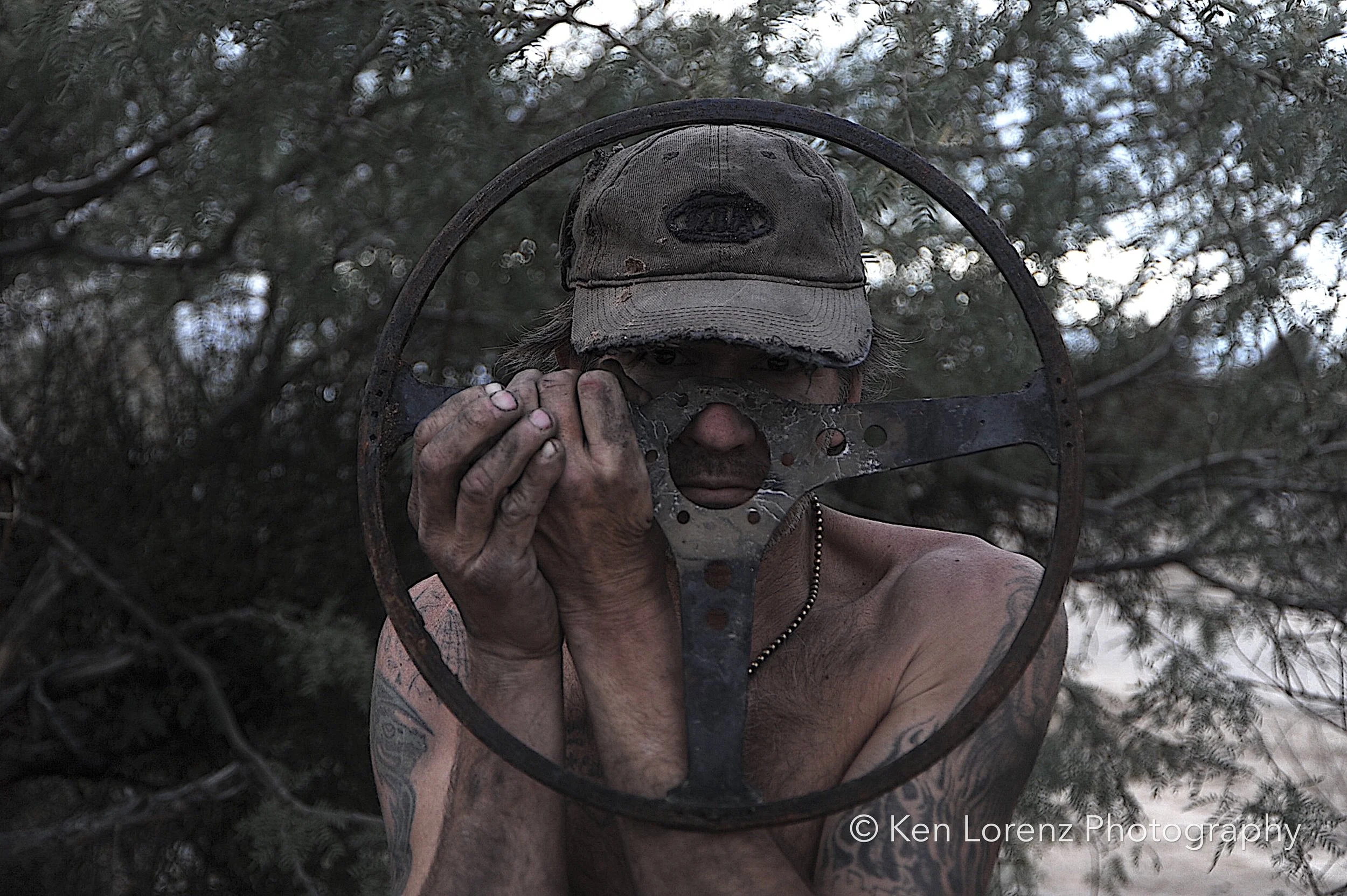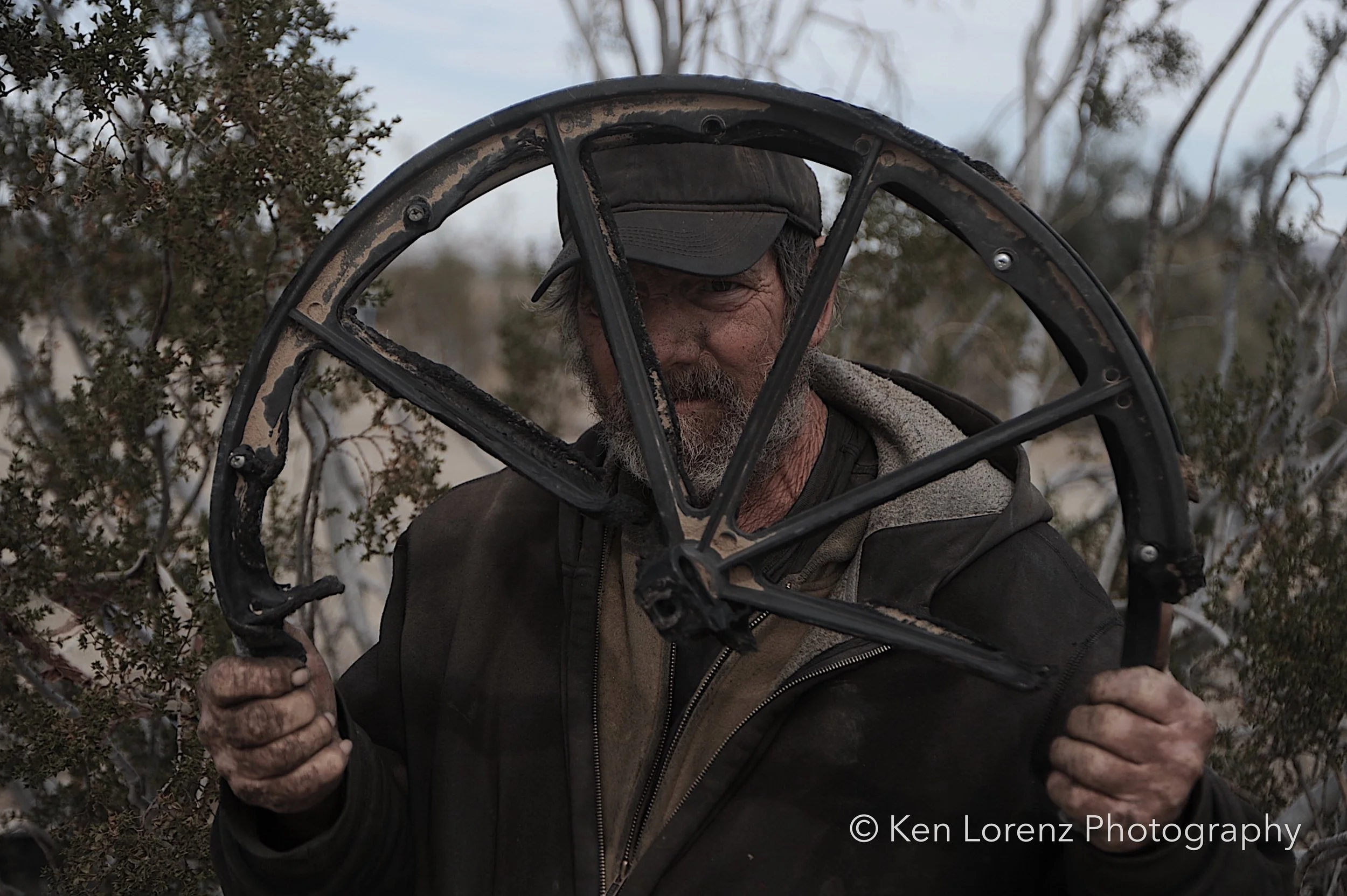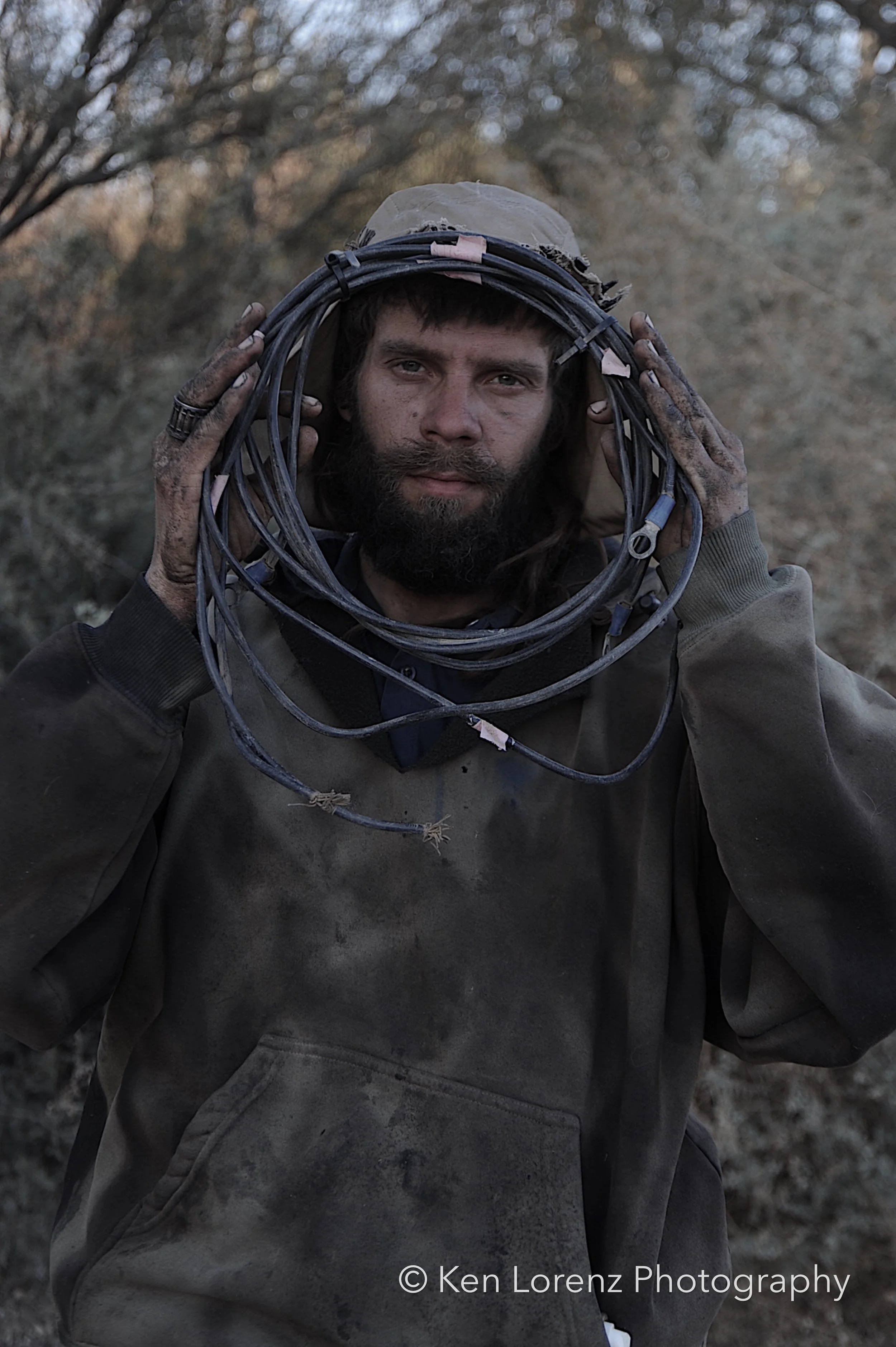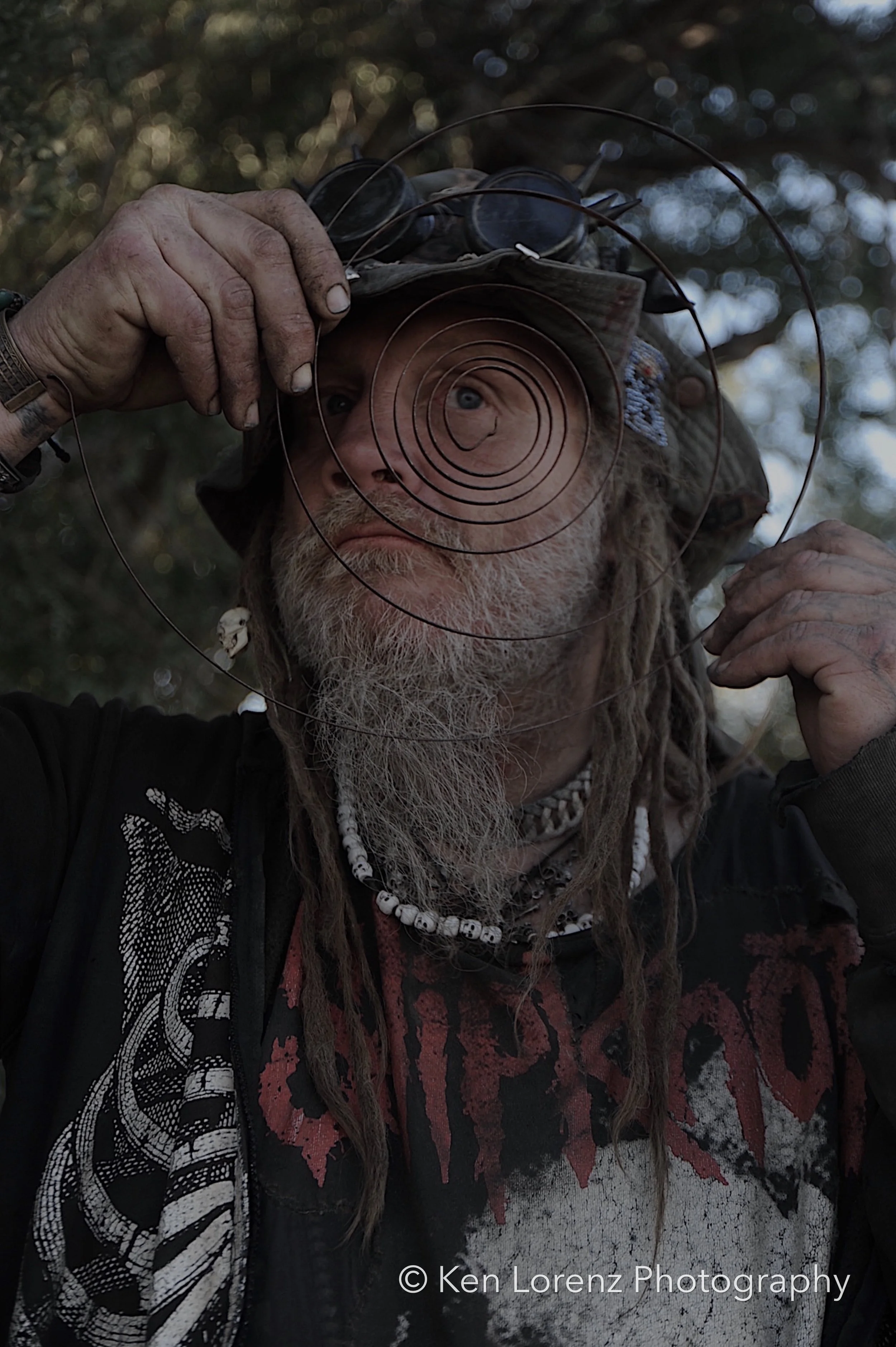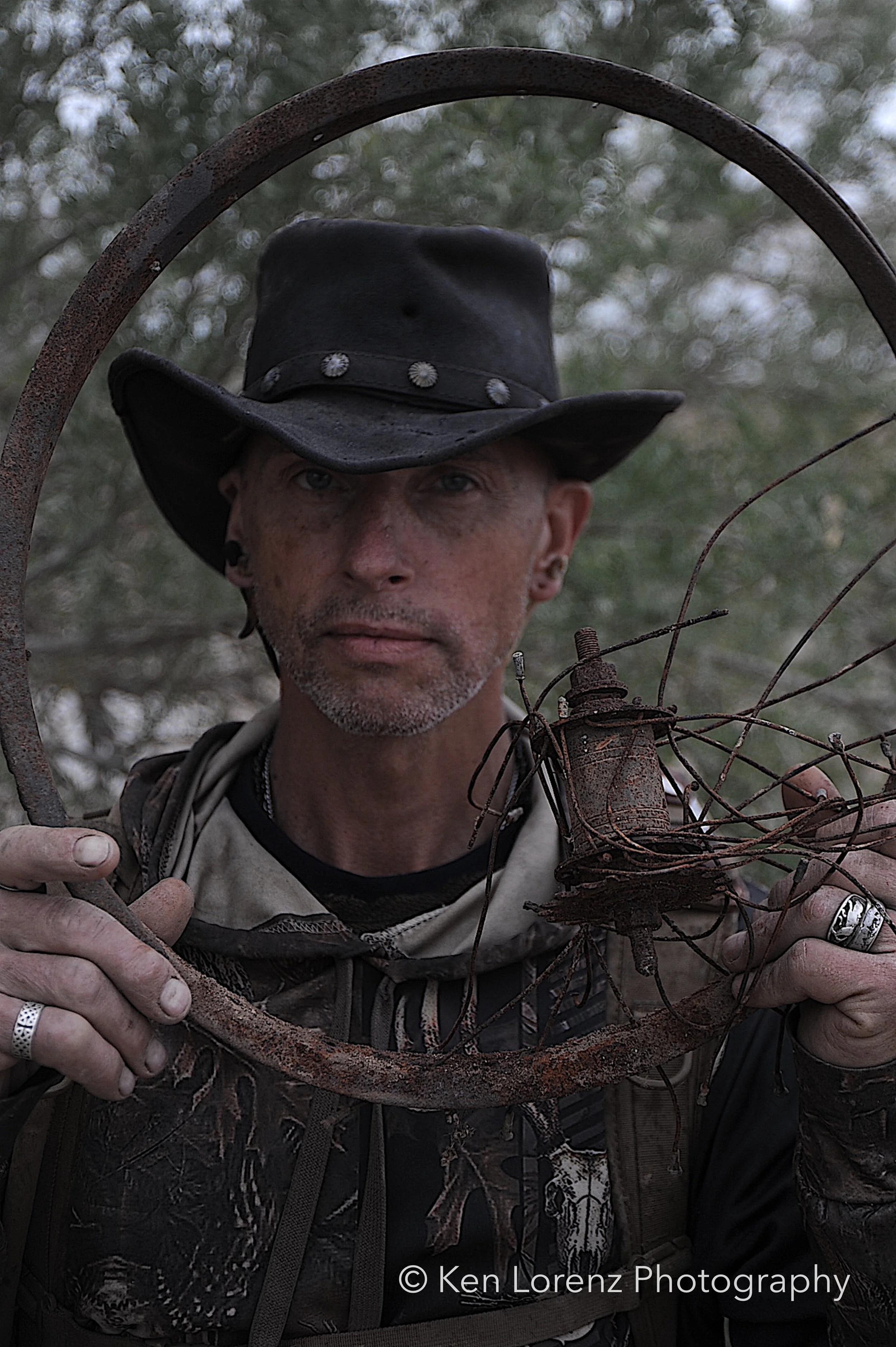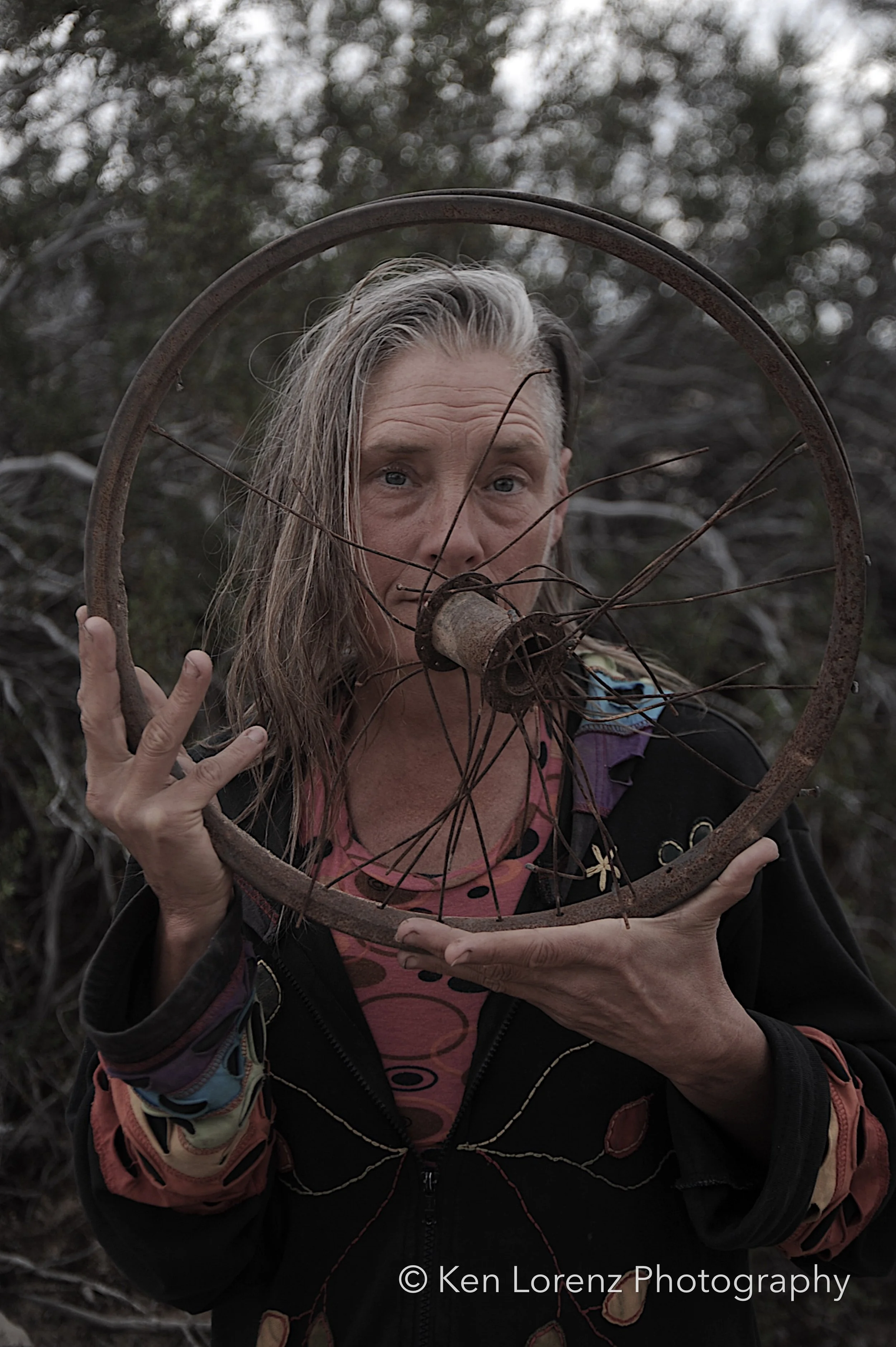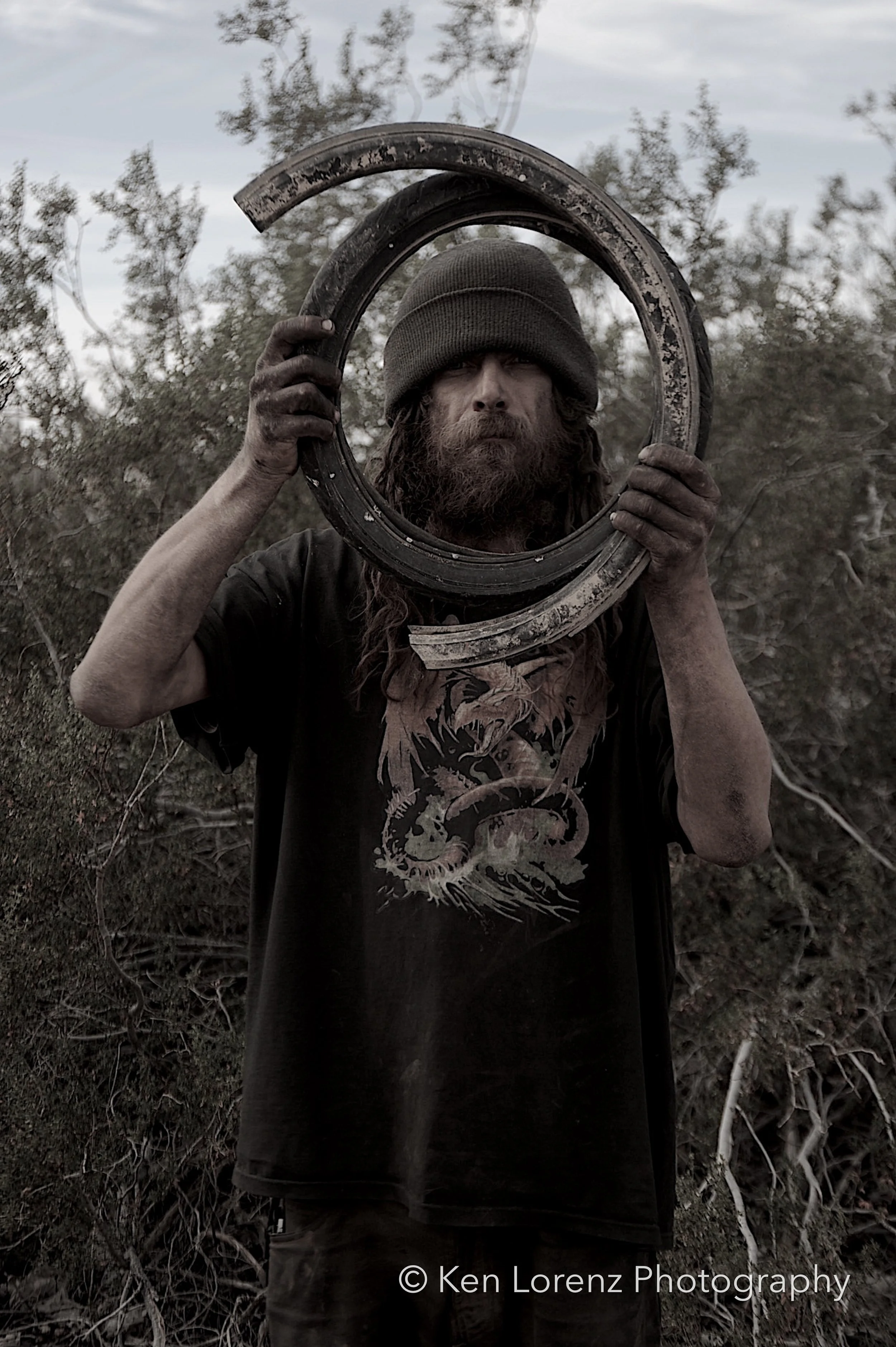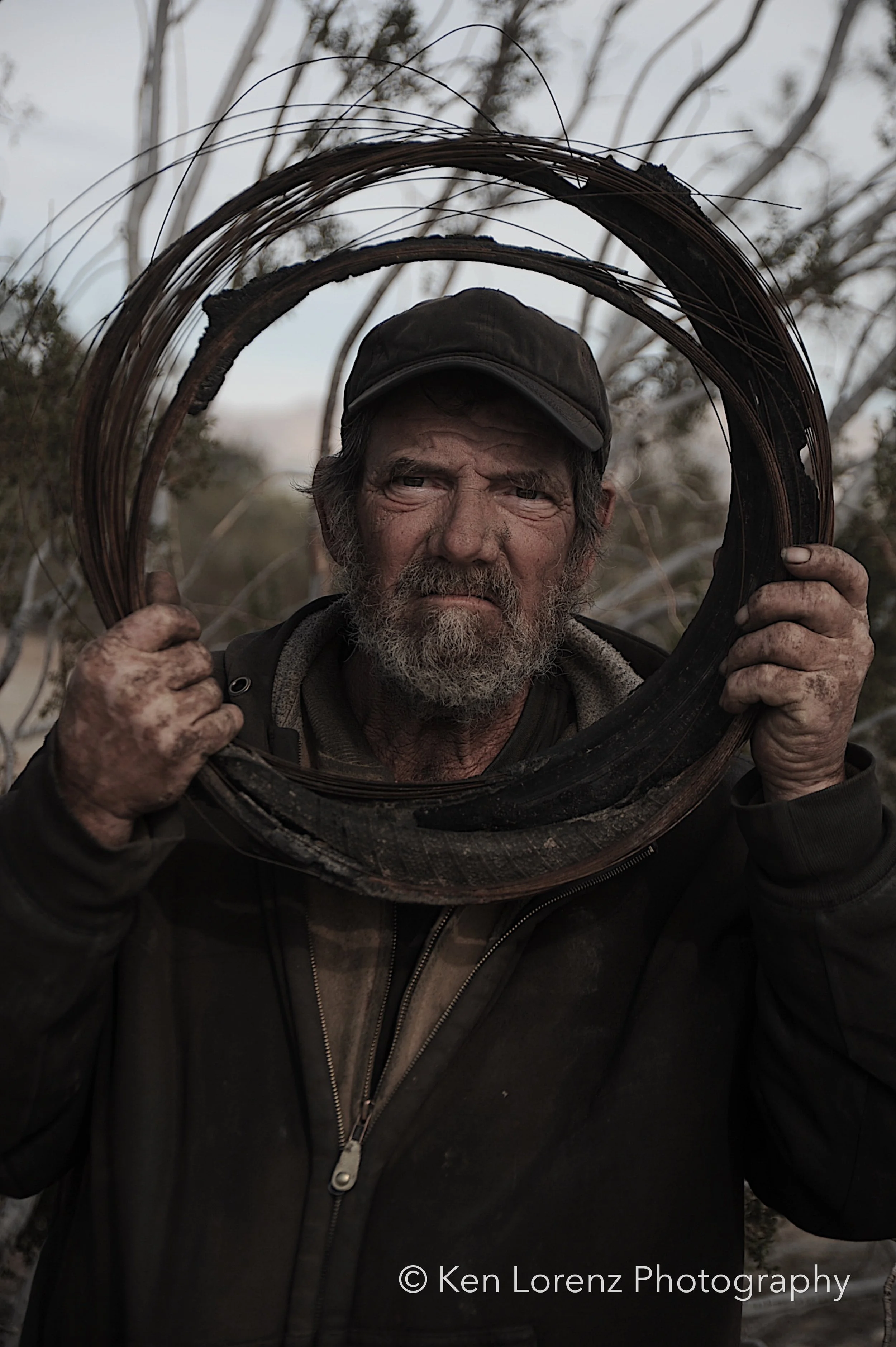Framed
A Secondary Shape That Reframes Meaning
Simply put, a frame within a frame is a secondary shape that borders and emphasizes a subject within an image. It’s a time-honoured compositional technique used across traditional art, still photography, and cinematography.
The first frame is the literal boundary of the photograph—the edges of the image itself. The second frame is created within that space, using visual elements to surround, enclose, or highlight the main subject. This internal frame helps guide the viewer’s eye and deepen the visual narrative.
In my earlier series, Desert Pieces (see portfolio), full-length portraits of subjects are paired with pieces of desert debris—objects found scattered across the arid landscape. This current body of work extends that concept. Here, the same desert props are used not merely as environmental elements, but as compositional frames—positioned more intimately around the subject in close-up or headshot portraits.
The use of a frame within a frame serves three key purposes:
Focus
It draws the viewer’s attention directly to the subject, eliminating distractions and intensifying visual impact.Context & Continuity
It links the image back to a broader body of work—specifically, Desert Pieces—creating thematic continuity and reinforcing the photographer’s artistic intent.Narrative & Emotion
It establishes a visual perspective and emotional context. The technique becomes a storytelling device, allowing the viewer to not only observe, but feel something meaningful through the framing.
In this series, framing is more than composition—it’s metaphor. It suggests enclosure, protection, isolation, or even confrontation. And in doing so, it elevates each image from mere portraiture to something more introspective and symbolic.
